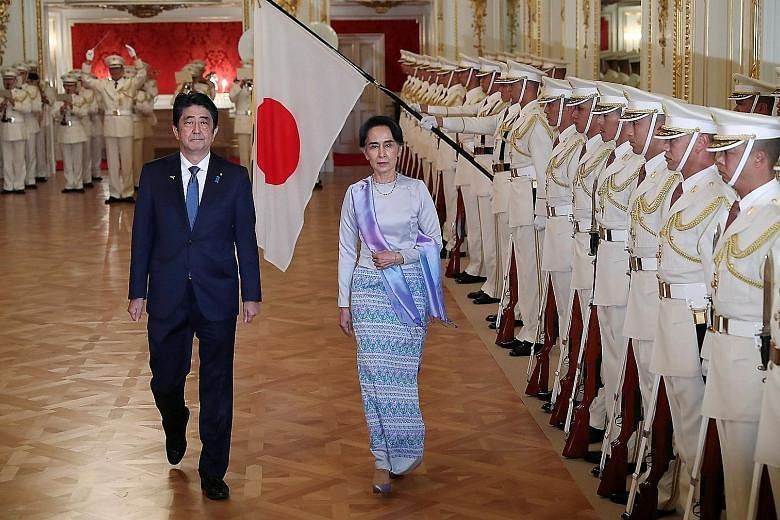Since Japanese Prime Minister Shinzo Abe took power in 2012, Japan has been devoting a much larger amount of aid to South-east Asia, in areas from infrastructure development to maritime capacity building, as well as in combating terrorism.
For instance, the East Asian state committed 2 trillion yen over five years to mark 40 years of Japan-Asean ties in 2013.
While Japan knows its pockets are hardly as deep as China's, analysts say that Japan has two things going for it.
"Japan touts quality, particularly on the comparative advantages and expertise it has, from urban planning to transport, water supplies, electrification and climate change mitigation technologies," said Professor Heng Yee Kuang, an international relations expert, of the University of Tokyo.
"It also emphasises training the target countries and developing human resources," he added.
This week, Mr Abe announced 800 billion yen (S$10.7 billion) in aid, loans and investments in Myanmar over five years, of which 5 per cent will go to ethnic minorities in the conflict-ridden Rakhine state.
In recent months, Japan has also pledged 45 billion yen over three years to fight regional terrorism, and offered to train some 1,000 maritime security officials across South-east Asia.
Last week, when Philippine President Rodrigo Duterte was in Tokyo, it was agreed that Japan will give the Philippines two more large vessels on top of 10 mid-sized coast guard ships previously agreed on. Japan is also giving patrol vessels to Vietnam.
To be sure, Japan's interest in South-east Asia is not new, but there are economic and strategic factors behind Mr Abe's push, evident in how he courted leaders by visiting all 10 Asean countries within his first year in office.
Prof Heng noted that Japanese firms are increasingly concerned with the rising cost of doing business in China, while Asean's emerging middle class has become an enticing prospect, signifying growing markets and abundant labour.
Mr Ippeita Nishida, who teaches international relations at Hosei University in Tokyo, pointed to an article Mr Abe published a day after he took office in 2012.
In the piece, he described how "increasingly, the South China Sea seems set to become a 'Lake Beijing' ". This would prove to be Mr Abe's guiding principle in urging "consolidated action by democratic and like-minded states", Mr Nishida said.
Unlike previous Japanese leaders, Mr Abe has ramped up Japan's strategic presence in the region by easing curbs on overseas weapon sales in 2014 and reinterpreting the Constitution a year later to allow military engagement.
Mr Nishida said some Asean countries might have been careful initially to avoid upsetting the balance with China, but some have "changed calculations over the years" in the light of the durability of Mr Abe's political power base.
"Further, a series of Chinese actions in the South China Sea, most notably in land reclamation, would have motivated countries like Vietnam and the Philippines to gear up cooperation with Japan."

